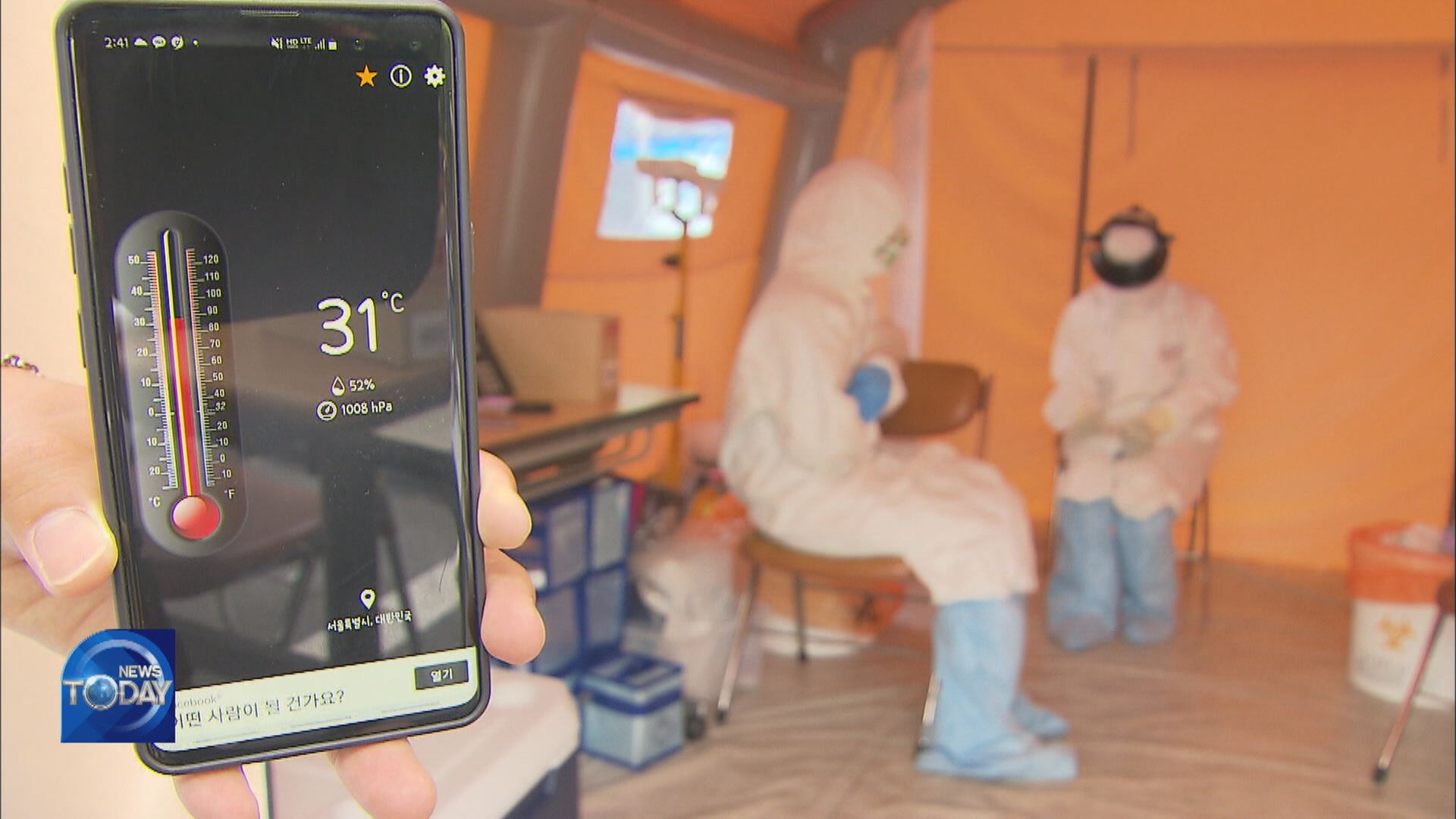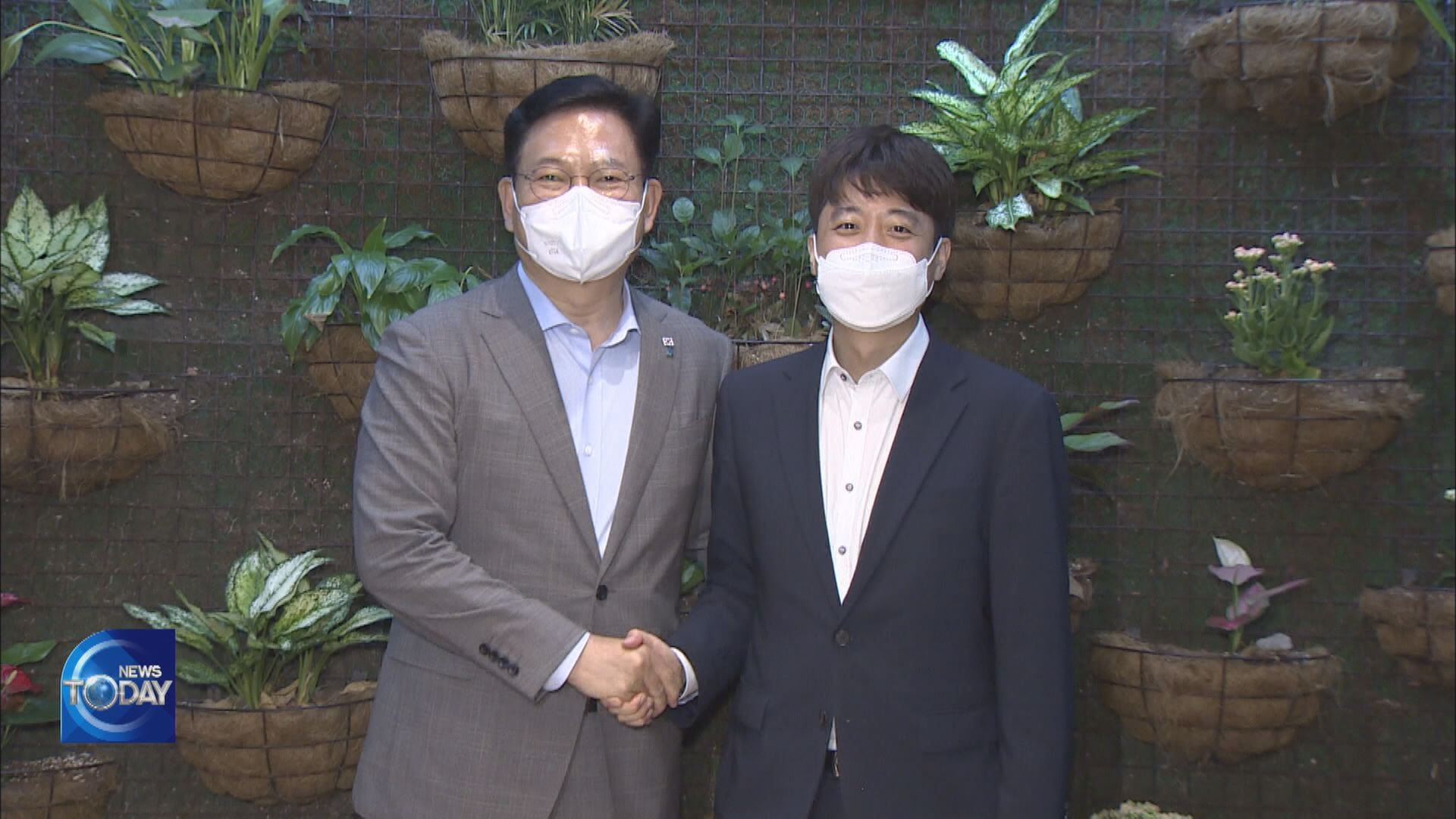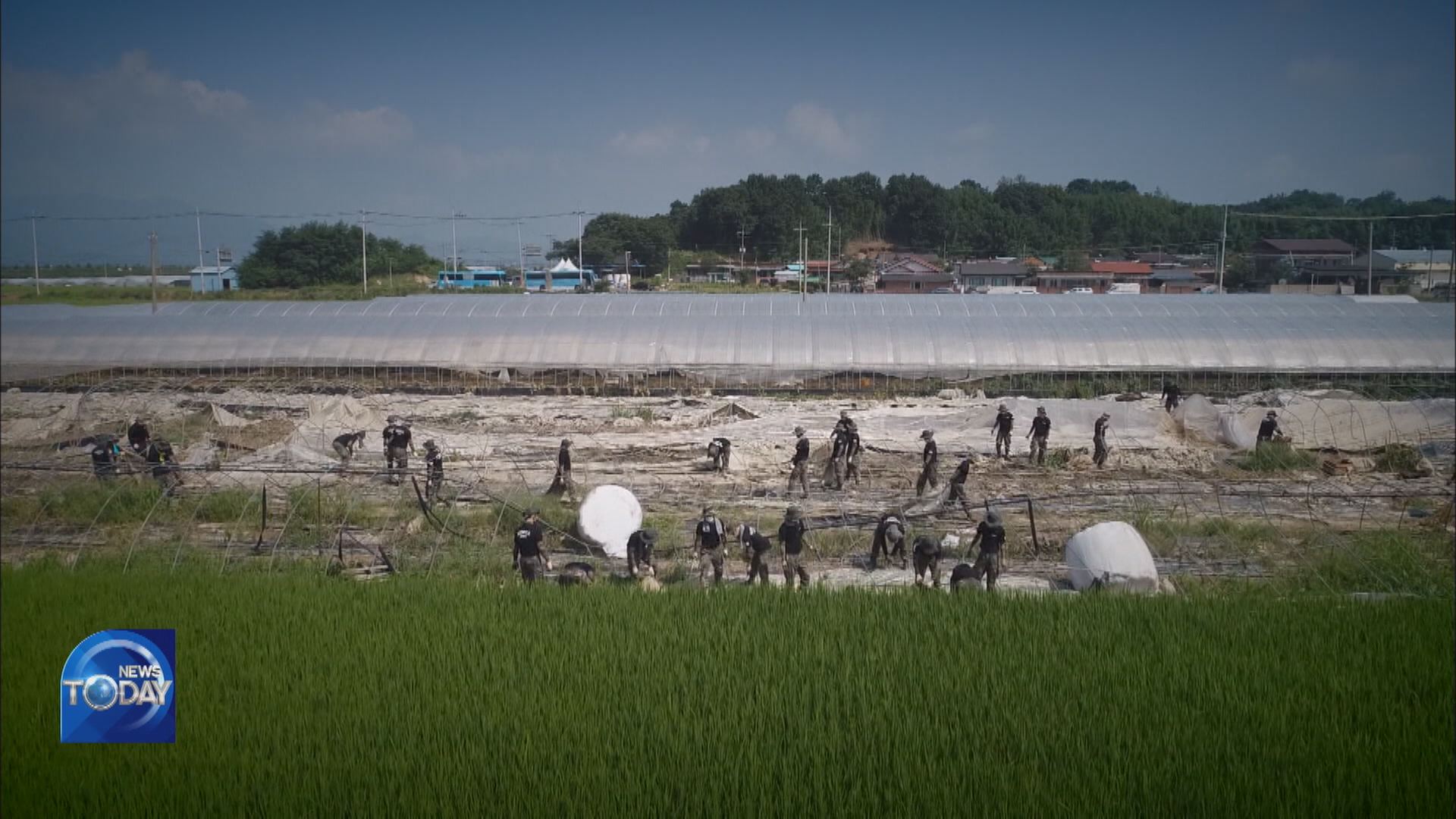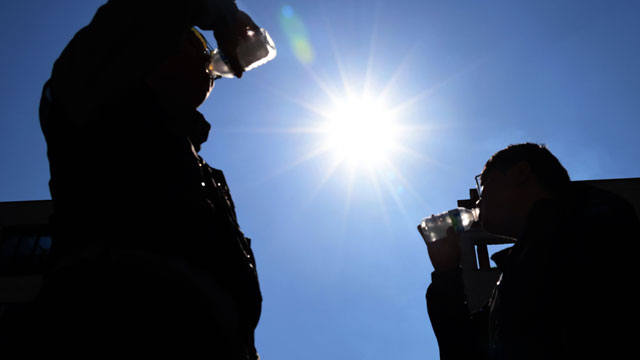HEATWAVE EXPECTED TO HIT KOREA
입력 2021.07.14 (15:08)
수정 2021.07.14 (16:46)
읽어주기 기능은 크롬기반의
브라우저에서만 사용하실 수 있습니다.
[Anchor Lead]
The sizzling heat is making South Korea’s fight against COVID-19 more difficult as the country enters a 4th wave of the pandemic with record case numbers. Two high pressure fronts are surrounding the Korean Peninsula, creating intense heat. The Korea Meteorological Administration predicts a longer and stronger heat wave this summer.
[Pkg]
Flooded river water flows through a city. Cars and people are swept away. This is China where record downpours are caused by the monsoonal front which impacted Korea last week. The seasonal rain front is now split in two affecting China and Japan. On the Chinese side, low atmospheric pressure has brought about heavy rain. Meanwhile on the Korean Peninsula, a sweltering heat wave continues resulting from southwesterly winds.
[Soundbite] Kim Soo-jin(Meteorologist, KMA) : "Hot weather will continue for the time being due to the influx of warm and humid air from the south and strong sunlight during the day."
The bigger concern starts next week when the monsoon ends. The North Pacific high pressure front will then completely envelop the peninsula while high pressure from Tibet in the west is also forecast to expand more powerfully this year. This can heat up both upper and lower layers of the atmosphere, essentially creating a huge heat dome.
[Soundbite] Lee Myong-in(Ulsan Nat’l Institute of Science and Technology) : "Strong high pressure in the upper atmosphere presses down and prevents the heated air below from escaping. This creates the perfect condition for a very muggy summer."
The longest-ever heat wave in 2018 resulted in 48 casualties. This year, monsoon rain that arrived later and set to last no more than a week is expected to prolong the scorching heat. Along with the recent spread of COVID-19, Korea is in for a particularly tough and long summer this year.
The sizzling heat is making South Korea’s fight against COVID-19 more difficult as the country enters a 4th wave of the pandemic with record case numbers. Two high pressure fronts are surrounding the Korean Peninsula, creating intense heat. The Korea Meteorological Administration predicts a longer and stronger heat wave this summer.
[Pkg]
Flooded river water flows through a city. Cars and people are swept away. This is China where record downpours are caused by the monsoonal front which impacted Korea last week. The seasonal rain front is now split in two affecting China and Japan. On the Chinese side, low atmospheric pressure has brought about heavy rain. Meanwhile on the Korean Peninsula, a sweltering heat wave continues resulting from southwesterly winds.
[Soundbite] Kim Soo-jin(Meteorologist, KMA) : "Hot weather will continue for the time being due to the influx of warm and humid air from the south and strong sunlight during the day."
The bigger concern starts next week when the monsoon ends. The North Pacific high pressure front will then completely envelop the peninsula while high pressure from Tibet in the west is also forecast to expand more powerfully this year. This can heat up both upper and lower layers of the atmosphere, essentially creating a huge heat dome.
[Soundbite] Lee Myong-in(Ulsan Nat’l Institute of Science and Technology) : "Strong high pressure in the upper atmosphere presses down and prevents the heated air below from escaping. This creates the perfect condition for a very muggy summer."
The longest-ever heat wave in 2018 resulted in 48 casualties. This year, monsoon rain that arrived later and set to last no more than a week is expected to prolong the scorching heat. Along with the recent spread of COVID-19, Korea is in for a particularly tough and long summer this year.
■ 제보하기
▷ 카카오톡 : 'KBS제보' 검색, 채널 추가
▷ 전화 : 02-781-1234, 4444
▷ 이메일 : kbs1234@kbs.co.kr
▷ 유튜브, 네이버, 카카오에서도 KBS뉴스를 구독해주세요!
- HEATWAVE EXPECTED TO HIT KOREA
-
- 입력 2021-07-14 15:08:10
- 수정2021-07-14 16:46:23

[Anchor Lead]
The sizzling heat is making South Korea’s fight against COVID-19 more difficult as the country enters a 4th wave of the pandemic with record case numbers. Two high pressure fronts are surrounding the Korean Peninsula, creating intense heat. The Korea Meteorological Administration predicts a longer and stronger heat wave this summer.
[Pkg]
Flooded river water flows through a city. Cars and people are swept away. This is China where record downpours are caused by the monsoonal front which impacted Korea last week. The seasonal rain front is now split in two affecting China and Japan. On the Chinese side, low atmospheric pressure has brought about heavy rain. Meanwhile on the Korean Peninsula, a sweltering heat wave continues resulting from southwesterly winds.
[Soundbite] Kim Soo-jin(Meteorologist, KMA) : "Hot weather will continue for the time being due to the influx of warm and humid air from the south and strong sunlight during the day."
The bigger concern starts next week when the monsoon ends. The North Pacific high pressure front will then completely envelop the peninsula while high pressure from Tibet in the west is also forecast to expand more powerfully this year. This can heat up both upper and lower layers of the atmosphere, essentially creating a huge heat dome.
[Soundbite] Lee Myong-in(Ulsan Nat’l Institute of Science and Technology) : "Strong high pressure in the upper atmosphere presses down and prevents the heated air below from escaping. This creates the perfect condition for a very muggy summer."
The longest-ever heat wave in 2018 resulted in 48 casualties. This year, monsoon rain that arrived later and set to last no more than a week is expected to prolong the scorching heat. Along with the recent spread of COVID-19, Korea is in for a particularly tough and long summer this year.
The sizzling heat is making South Korea’s fight against COVID-19 more difficult as the country enters a 4th wave of the pandemic with record case numbers. Two high pressure fronts are surrounding the Korean Peninsula, creating intense heat. The Korea Meteorological Administration predicts a longer and stronger heat wave this summer.
[Pkg]
Flooded river water flows through a city. Cars and people are swept away. This is China where record downpours are caused by the monsoonal front which impacted Korea last week. The seasonal rain front is now split in two affecting China and Japan. On the Chinese side, low atmospheric pressure has brought about heavy rain. Meanwhile on the Korean Peninsula, a sweltering heat wave continues resulting from southwesterly winds.
[Soundbite] Kim Soo-jin(Meteorologist, KMA) : "Hot weather will continue for the time being due to the influx of warm and humid air from the south and strong sunlight during the day."
The bigger concern starts next week when the monsoon ends. The North Pacific high pressure front will then completely envelop the peninsula while high pressure from Tibet in the west is also forecast to expand more powerfully this year. This can heat up both upper and lower layers of the atmosphere, essentially creating a huge heat dome.
[Soundbite] Lee Myong-in(Ulsan Nat’l Institute of Science and Technology) : "Strong high pressure in the upper atmosphere presses down and prevents the heated air below from escaping. This creates the perfect condition for a very muggy summer."
The longest-ever heat wave in 2018 resulted in 48 casualties. This year, monsoon rain that arrived later and set to last no more than a week is expected to prolong the scorching heat. Along with the recent spread of COVID-19, Korea is in for a particularly tough and long summer this year.
이 기사가 좋으셨다면
-
좋아요
0
-
응원해요
0
-
후속 원해요
0

















이 기사에 대한 의견을 남겨주세요.